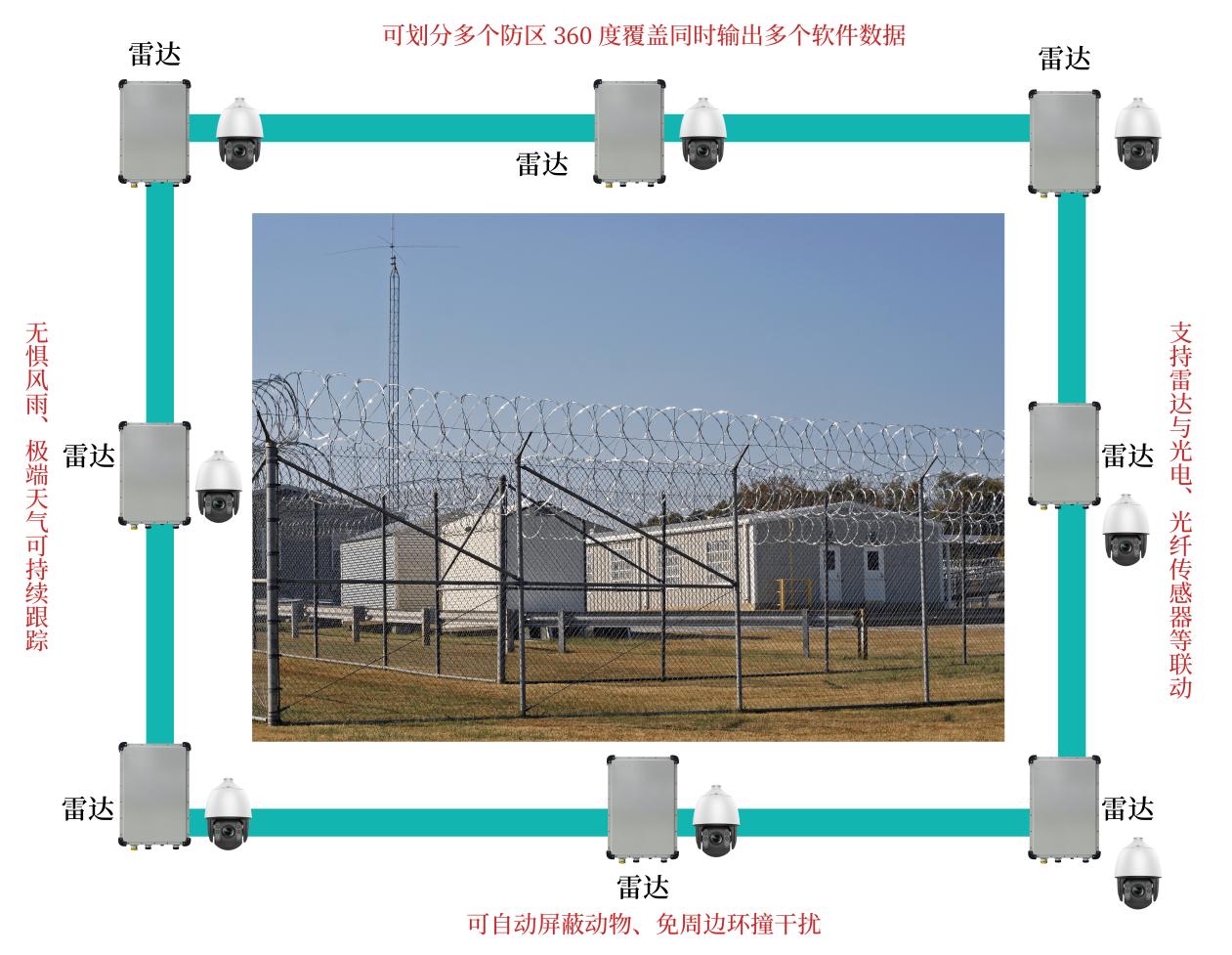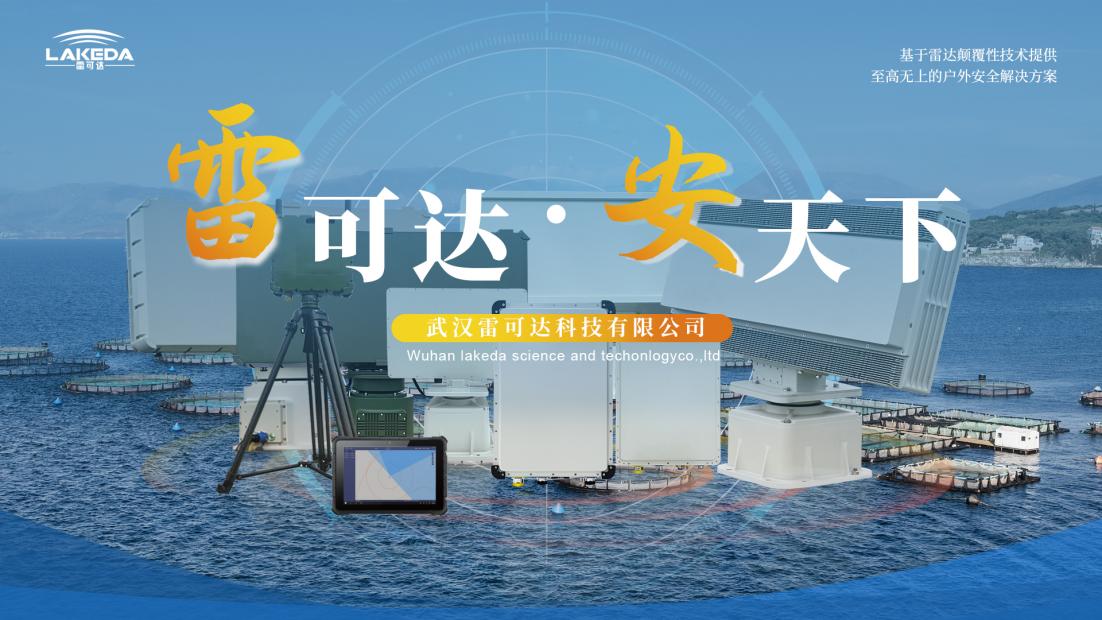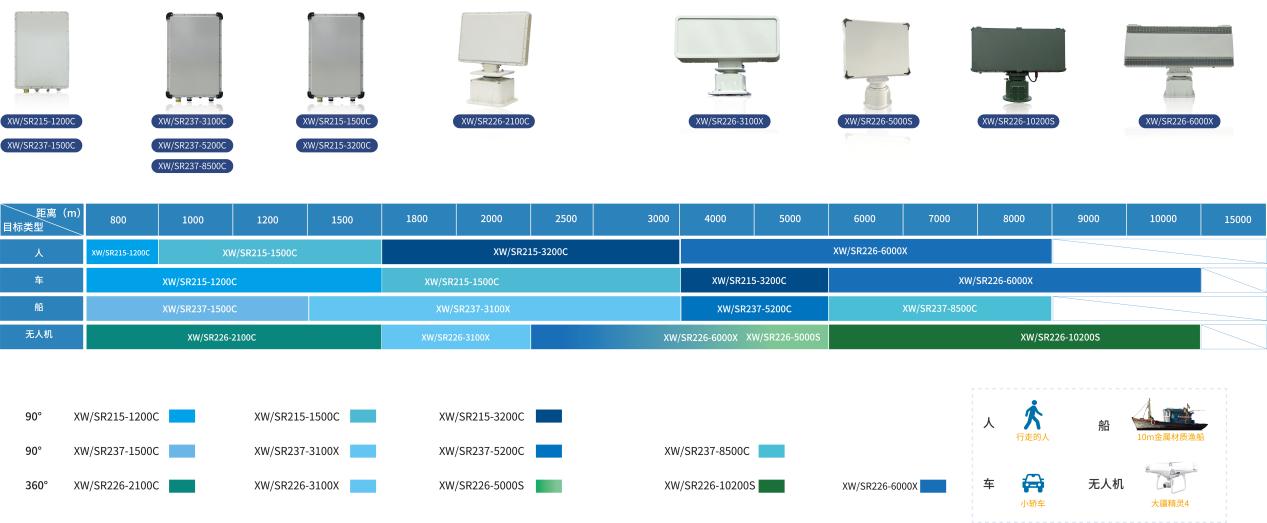Technology and cost-benefit analysis of a new compact security radar and fiber-based fence perimeter system
Release time:
2024-09-24
1. Overview
When it comes to securing the perimeter of an important location, there is no perfect solution for all scenarios. Different sensors and security deterrence measures target different environments and security needs. Leading global security experts agree that the security of high-value private property and critical infrastructure sites requires the use of multiple sensor combinations and multi-layer systems to provide users with high-quality perimeter protection.
The development of this multi-layered security plan is based on a thorough and thoughtful analysis of threats in multiple scenarios. This article will clarify whether different security measures are suitable for sensitive needs in multiple scenarios. When customers are trying to understand the costs and benefits of a new compact security radar compared to a fiber-based fence security system, they should carefully consider a number of relevant factors. such as costing, integration compatibility, maintenance operations, and the specific needs of their site. While considering the relevant factors, it is also important to note that technology is constantly evolving, and it is important to understand the latest developments in perimeter security systems. Therefore, it is best for customers to conduct their own research and use the latest information so that they can make informed decisions based on their specific and up-to-date needs, budgets and environmental issues.

2. what is a fiber optic based fence security perimeter system?
A fiber-based fence security system is a perimeter security system that uses fiber-optic cables embedded in the fence to detect any interference or violations. These systems work by monitoring the vibrations and changes in the optical transmission signal that is constantly passing inside the fiber optic cable. When an intruder tries to climb, cut or tamper with the fence, the fiber optic system can detect the disturbance and trigger an alarm or alarm. The technology is highly sensitive and can provide real-time perimeter monitoring, making it an effective security solution for highly secure installations.
A typical fiber optic sensor system installed on the fence divides each fiber on the running fence line by area, so that the monitoring personnel have a relatively good understanding of the location of the intrusion (attempted intrusion) when the interference occurs. Each fiber is divided into a sensor unit, and the vibration of the intrusion is sensed in the smallest unit. When the alarm/disturbance alarm signal is transmitted to the network manager and displayed on the security system, the system can be a video management system (VMS), a security management system (SMS) or a physical security information management system (PSIM).

3. what is the new compact security radar?
The new compact security radar is a key component of many perimeter security systems. These radars use the propagation of radio waves to detect and track moving objects within a specific area. It can provide real-time information about potential threats close to the perimeter in a timely manner, enabling security personnel to quickly and effectively predict and respond to actual intrusions before they occur.
The new compact security radar is often combined with other sensors and systems to create a comprehensive security solution. It is very effective in detecting intruders in all weather conditions and can cover large areas with high accuracy at a fraction of the cost of fiber optic security technology.
Many of the world's current surveillance radars, including Lakeda's new compact security radar, can be easily integrated with the most common PTZ cameras, allowing the use of radar and cameras to track targets (intruders). In the event that the camera is ineffective due to bad weather, the radar will still accurately track the target and be processed by LGSS_AI smart box to make a preliminary classification of whether the target is a person, vehicle or animal.
In addition, you can set some specific areas that need attention on the LGSS_AI GIS map to create specific alarm areas. If a suspicious activity object is detected, an alarm response is triggered. For example, if a suspicious vehicle moves along the warning area of the fence line, if the vehicle stops in the area for a short time, the alarm will be triggered; if the vehicle passes smoothly without stopping, the alarm will not be triggered.
The new compact security radar can detect, track and alarm well before the target approaches the fence. And will also continue to track the target as they approach, pass or move away from the fence line. In addition, the most important thing is that radar can be used to track water targets that cannot be set fence lines.

4. Compact Radar & Fence Fiber Optic Sensor
Fence fiber optic sensors all provide the same basic function of point detection, which means that an alarm will only be triggered when the line is touched or "disconnected. These systems work well for point detection in and around the perimeter, but have a number of disadvantages compared to radar-based security:
Fences and fiber optic sensors usually require complex and extensive installation, and the installation cost is usually the same or more as the original purchase price of the equipment. Buried fiber installation is particularly labor intensive, requiring trenching wherever the fibers are laid. In addition, once installed, these security measures are far less flexible to site changes than radar-based measures.
01, fence fiber optic sensor will not give any high-level warning of intrusion attempts. They signal when someone is on the fence, not before. In contrast, surveillance radar can provide a high-level warning of several minutes before an intruder reaches the fence, providing operators with significant additional time to notify, engage a response team, or initiate other deterrent measures.
Fence and broken beam sensors only give you one chance to detect intruders. In locations where there are only fiber-based fences, there are no more detection points once an intruder passes through the fence. In contrast, surveillance radar tracks the intruder throughout the field of view, constantly updating the intruder's location inside and outside the fence line.
The fence fiber optic sensor does not provide the exact location, only the sector. This makes it difficult to prompt the gimbal camera directly to the target. If the realization of the prompt is also limited to the general preset area, rather than the target itself. Compact surveillance radars, such as those provided by Lakeda, provide real-time GPS coordinates of the intruder, updated every second, allowing the camera to track the intruder as it moves.
03. The fence fiber optic sensor only provides single-point detection and does not allow behavioral filters, such as track duration and distance driving measures, to mitigate nuisance alarms. In contrast, compact surveillance radars are able to filter detections based on behaviors such as distance travel, speed, direction, and tracking duration. This filtering option helps keep nuisance alerts to a minimum, whether due to local wildlife, leaf movement or non-threatening human traffic.
Case study 5. Lakeda's new compact security radar with fencing sensor based on fiber optic technology
Because the pricing of the system and the construction needs of the site may vary greatly, it is almost impossible to conduct an accurate price analysis between the new compact radar and the fiber-based fence system. A case study based on the quotation of a fiber-optic fence system for a nuclear power plant is presented below with a rough estimate.
- Fence Scene Based on Optical Fiber Technology
The perimeter fence line of the power plant site is estimated to be 2000 meters. The use of fiber-optic fencing on this site will provide intrusion detection strictly at the fencing line itself, and alerts will only be issued if the fence continues to have attempted violations. Fencing system materials based on fiber optic technology are quoted at $250000, which does not include the actual cost of labor or physical fencing.
- New Compact Security Radar Scenario
In the example using the Lakeda system, there are two options:
Option 1: Lakeda will have enough radar installed to cover the entire site. The price of radar, bracket and cable will be lower than 100000 yuan.
Option 2: In addition to all the elements listed in Option 1, this option will also include additional active tracking of land and water targets and effective tracking of large areas near the fence line in close visibility. This option will be less than $150000.
6. Conclusion
Both the fiber-optic based fence perimeter security system and the new compact surveillance radar have great advantages to provide perimeter security. Both rely on protecting high-value assets, and they can be relied on to detect more active violations nearby.
Generally speaking, the new compact surveillance radar provides a better return on investment, because their upfront and installation costs are relatively low, and they have the extended surveillance capability of tracking targets inside and outside the perimeter, as well as the capability of filtering nuisance alarms, which can effectively reduce false alarms, and at the same time more accurately integrate with the pan-tilt camera and complete the tracking linkage of targets, as well as the capability of customized alarm area operation.









